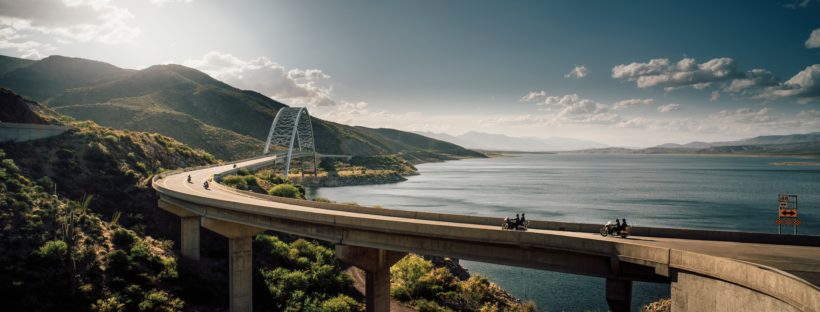I once heard a story about a monk who went to visit his master on a rainy day. The monk and the master spoke for a while and then before the monk left, the master asked, “What side of the umbrella did you leave your shoes?” The monk thought this question was absurd and trivial. Did it really matter where his shoes were when his purpose was of a spiritual nature? The monk replied, “I do not know.” The master then said, “Go and meditate another seven years for you are not ready.”
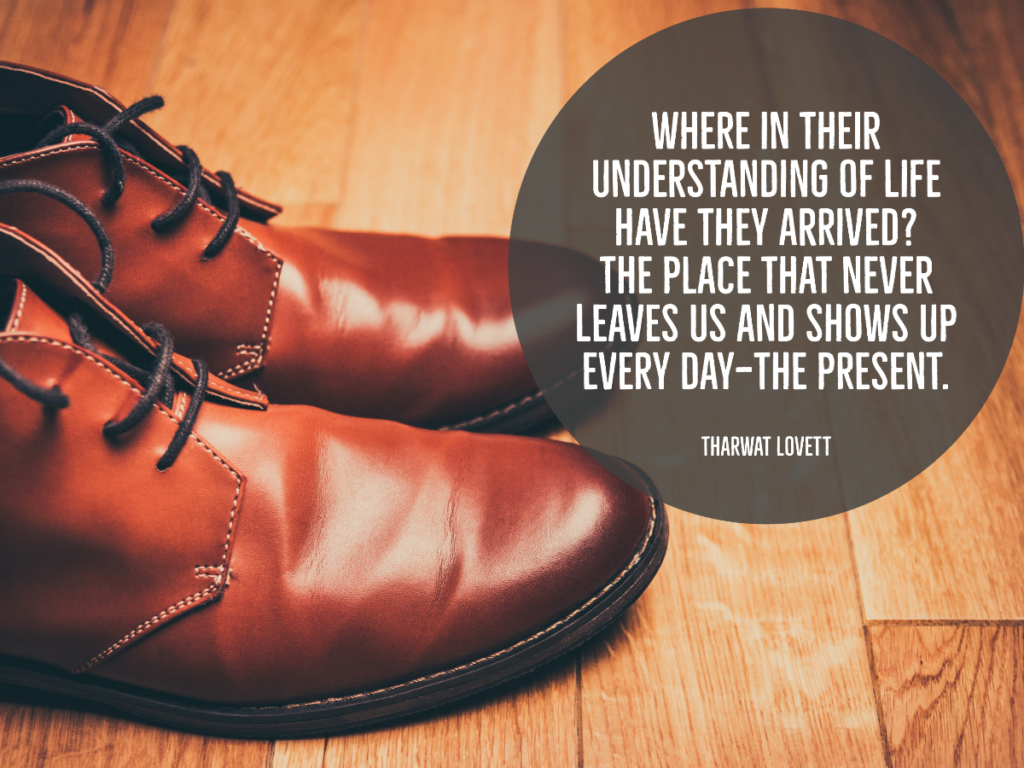
Monks spend years in monasteries studying with the Masters to learn what the meaning of life is all about. Humans have spent countless hours contemplating the existential purpose of life. Where in their understanding of life have they arrived? The place that never leaves us and shows up every day—the present.
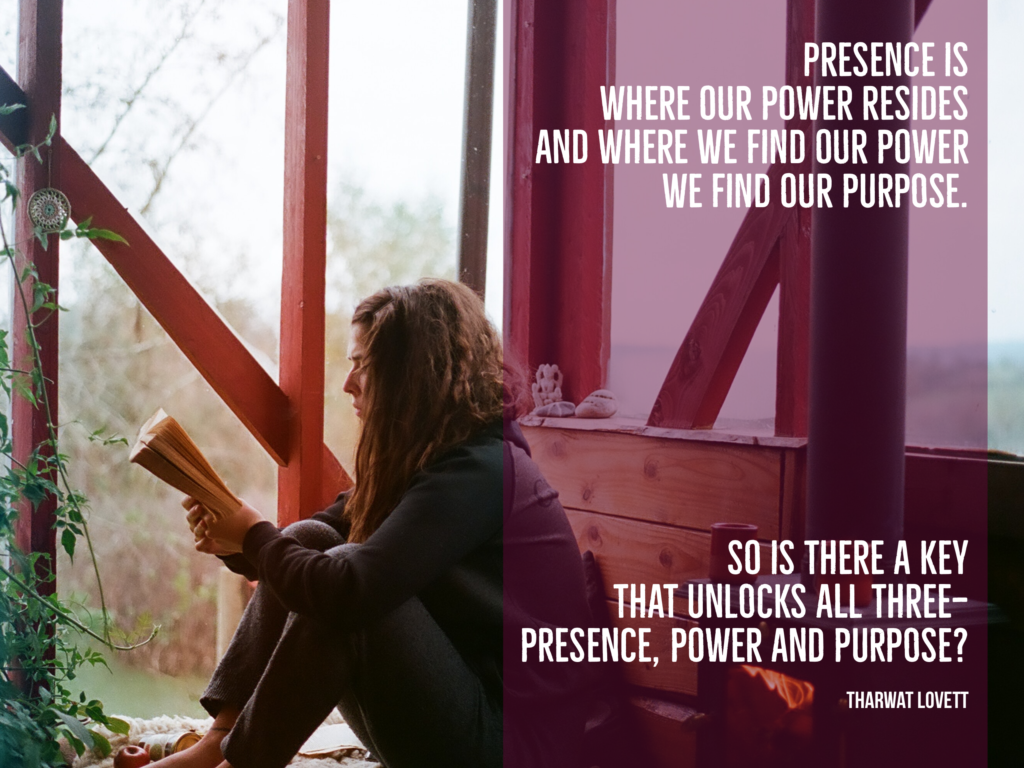
Existential philosopher or not, we are all driven, at some point, to search for purpose, power and presence. Presence is where our power resides and where we find our power we find our purpose. So is there a key that unlocks all three—presence, power and purpose?
Mindfulness. The quickest way to access the power in the present moment that leads to the discovery of our purpose is through mindfulness.
Mindfulness is a tool through which we can experience life at its most fulfilling level. When we are mindful we allow the universe to fill our minds and hearts with the sights, sounds, smells, tastes and touches available to us only in the present moment. When mindful, we feel as if we exist in a constant state of flow. We achieve mindfulness when we are able to remain in unreactive presence. Mindfulness is the power of now.
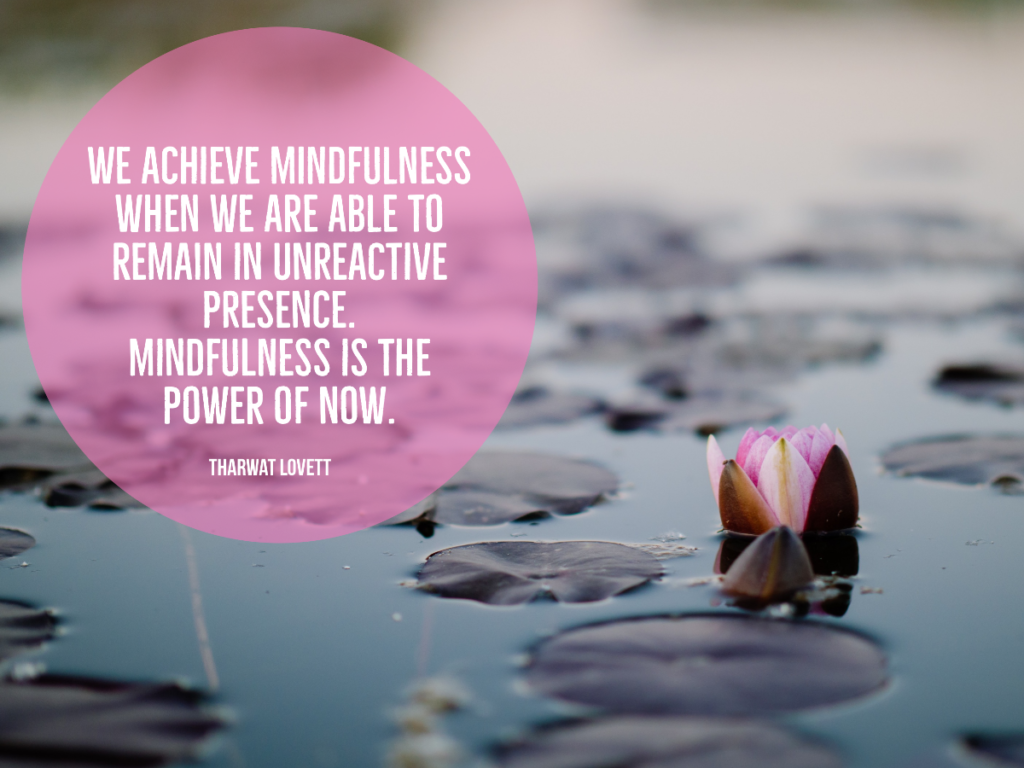
When we ‘fall asleep’ or allow our minds to fill with future plans and past experiences, they become dams that have no room for the flowing, creative, universal stream of consciousness to replenish its waters. In a sense, we have grown attached to the stagnant pool captured behind the dam. Furthermore, while our mind is preoccupied with the stagnant pool of the past and future, our present becomes governed by our autopilot—our subconscious programming—our past.
We must learn in our own way how to exist in a state of mindfulness. In order to be freely who we are, we must remove the obstructions that block us from realizing our true potentials. We must override the cruise control that has us living in the past and choose to live in the present moment.
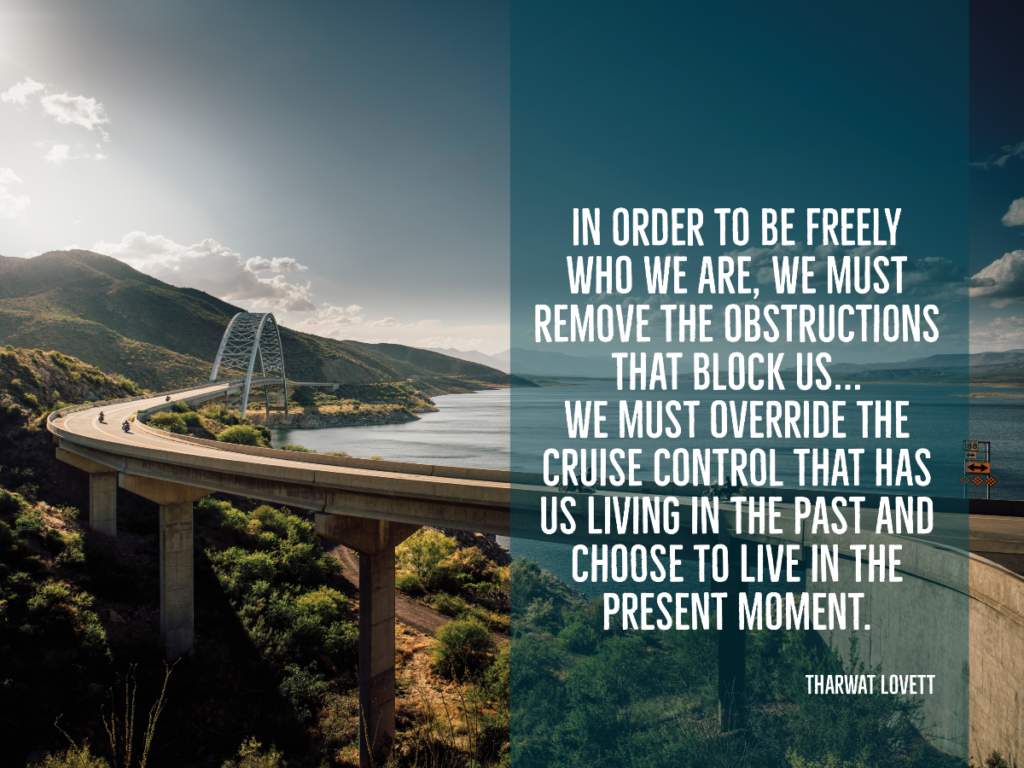
Mindfulness is the conscious saturation of multiple streams of data available to us now. Opening ourselves up to receive and experience this information builds the presence that accesses the power that yields our purpose. And that is the meaning of life.
